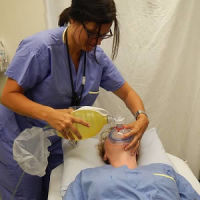Extracorporeal life support (ECLS) technologies are now more frequently used at centres around the world, according to researchers who analysed data from an international registry. Rate of growth in ECLS use is fastest among adults with respiratory failure. The findings are reported in the ASAIO Journal.
See Also: European Perfusionists in ECLS/ECMO: Roles & Responsibilities
Extracorporeal life support refers to the use of extracorporeal membrane oxygenation (ECMO) and other techniques to provide blood circulation and oxygenation for certain groups of critically ill patients. Like cardiopulmonary bypass during surgery, ECLS takes over the work of the heart and lung for a period of days or weeks – rather than just a few hours.
Dr. Ravi Thiagarajan and colleagues reviewed data on ECLS submitted to the Extracorporeal Life Support Organization (ELSO) registry. "The ELSO registry has collected important information on ECLS use from centres worldwide and has helped us understand ECLS utilisation and outcomes," the authors write.
As of July 2016, the ELSO registry included information on 78,397 infants, children, and adults receiving ELCS since 1989. In 2015, the last year of full data collection, ECLS was used in 7,901 patients at 310 centres worldwide. The report shows that ECLS is now being used more often in adults than in newborns with respiratory failure.
Overall, 70 percent of patients were successfully weaned off ECLS, while 58 percent survived to be discharged from the hospital. When ECLS was used for respiratory failure, the rate of survival to discharge was 74 percent for newborns (under 30 days) and 58 percent for older children and adults.
Data analysis also revealed the following trends in ECLS use:
- Newborns with respiratory failure remain the largest group of ECLS patients.
- Adults with respiratory failure are the fastest-growing group of ECLS patients. This trend may reflect the impact of the H1N1 influenza ("swine flu") epidemic, as well as a 2009 study (the CESAR trial) showing that ECMO improves survival in adults with severe respiratory failure.
- ECLS is also used in patients with various causes of cardiac failure: overall rates of survival to hospital discharge were 42 percent for newborns, 51 percent for older children, and 41 percent for adults.
- Use of ECLS is also growing among patients who don't respond to cardiopulmonary resuscitation.
Although ECLS is potentially lifesaving, the patients who need it are severely ill, and remain at high risk of complications and death. As Dr. Thiagarajan and co-authors point out: “Adverse events during the course of ECLS are common, and underscore the need for skilled ECLS management and appropriately trained ECLS personnel and teams.”
Source: Wolters Kluwer Health
Image Credit: Wikimedia Commons
References:
Thiagarajan RR, Barbaro RP, Rycus PT et al. (2016) Extracorporeal Life Support Organization Registry International Report 2016. ASAIO J, published ahead of print 15 Dec. doi: 10.1097/MAT.0000000000000475
Latest Articles
Extracorporeal Life Support, respiratory failure, ECLS
Extracorporeal life support (ECLS) technologies are now more frequently used at centres around the world, according to researchers who analysed data from an international registry.



























